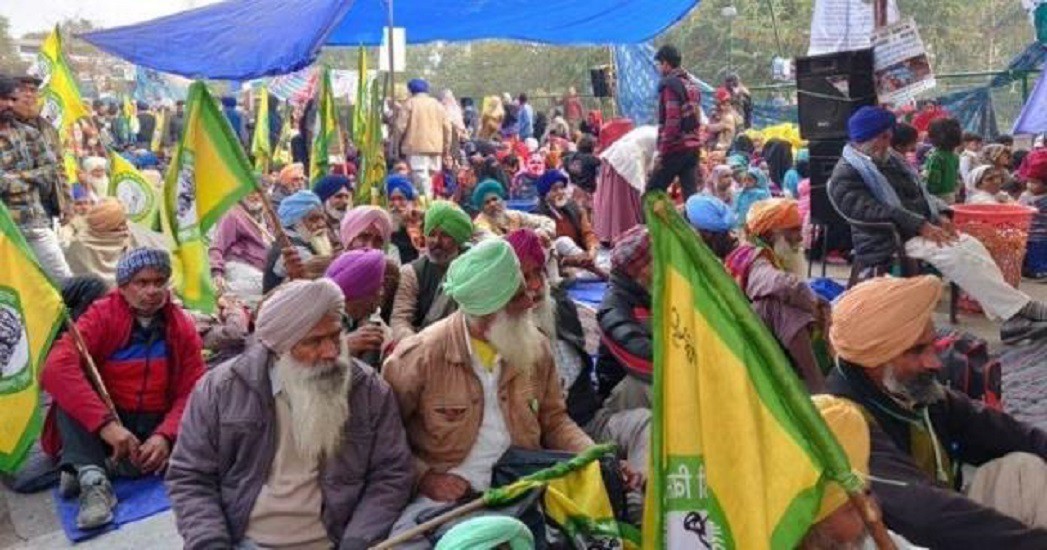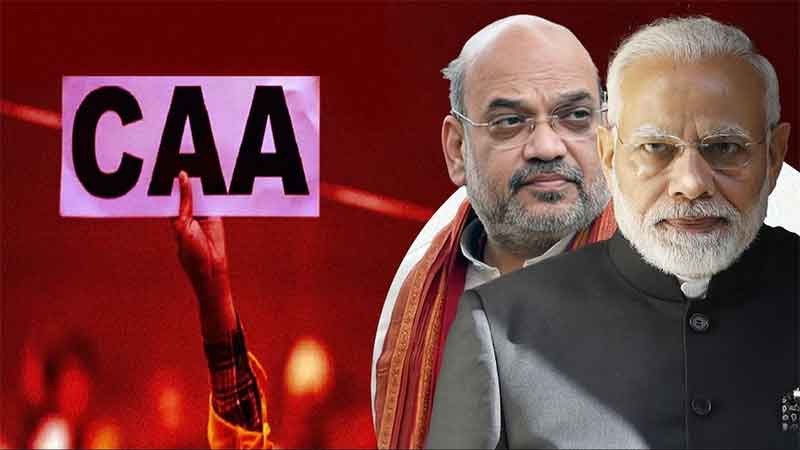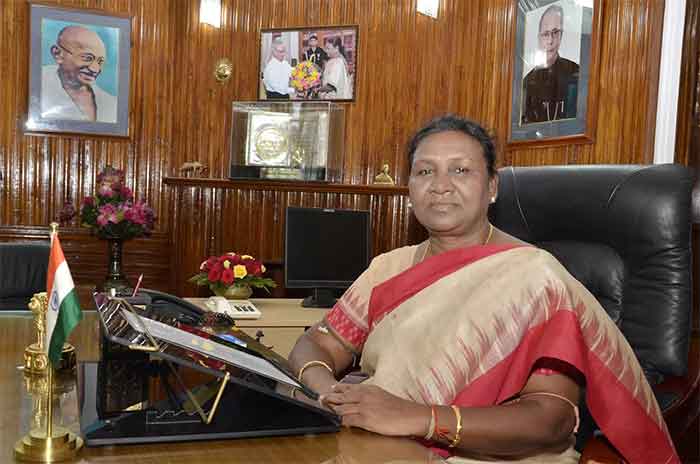
Contrary to popular opinion, that theory and practice are two irreconcilable extremes, the fact is the two are sequential steps, where theory must precede practice and not the vice versa. While in theory rests the intellectual part, the practice covers the operational aspects of any revolution. Any effort to switch the process would result in catastrophe. To elaborate further, every revolutionary idea is grounded in a theory. Without it, there can be no revolutionary imagination. Theories shape the narrative and narrative acts as fodder for the frontline volunteers and leaders who lead the movement. In other words, it is the strength and weakness of the theory that determines the nature and shape of any movement. Having said that it is also important to remember that there might be tremendous operational and logistical challenges in the pursuit of goals set by the narrative. But the challenges in the advocacy of the cause in no way should raise a question mark on the theory and the narrative. The singular commitment and faith in the theory is a revitalizing force that helps in overcoming all roadblocks. Moreover, it has to be remembered that the implementation part goes through a long and winding road, hence patience and perseverance is the key.
For long the Muslims have failed to theorize their oppression. And by the above discussion it is evident that in the absence of a theory, they would forever fail to set their narrative and build a movement around it. No movement means no revolutionary zeal and a perpetual status quo. The perpetual status quo is a perpetual opportunity for not just the oppressors but also those who enable it. Interestingly, for this failure, the blame is put on the Muslims themselves by those very people who have appropriated Muslim cause, crowd, voice and vote for around three-quarters of a century.
Coming to the article by the famed Ajay Gudavarthy (https://www.thehindu.com/opinion/op-ed/mobilisation-and-composite-culture/article33621318.ece), published on Thursday, 21st January 2021, in The Hindu, one cannot but notice the suave art of narrative building. Semantics play a very important role in narrative building. And the writer has used every skill in his repertoire to play around with the semantics in the build-up to the narrative.
Semantics is the usage of words, phrases and meta description in a certain way to achieve a set objective. Semantics has the power to convert theories and ideas from abstract to concrete form and from concrete to abstract depending on the purpose for which the write-up is prepared.
Some of the more popular words and phrases quite often used in this art have mathematical sources. For instance, prime, composite, odd, even, complex, calculus, algebra, algorithm and so on. The sheer usage of such fancy keywords and phrases by famed and accomplished writers gives credence to their opinion in the eyes of innocent and vulnerable readers. Some other popular words that are a rage these days in the market are transformative, synergy, ecology, environment, sustainability, disruptive, ecosystem, scalable, intelligent, smart, integrated and so on. More on it later.
Semantics has played an important role in the vilification of the Muslim community worldwide. For example, the word ‘Islamophobia’ is etymologically wrong when it comes to defining the planned violence and state-sponsored hate campaign against Muslims. Yet it is widely used and has been normalized to the extent that even Muslims use it. There exists no such term as Islamophobia in India or anywhere in the world in the public sphere. Most of the people from other faiths don’t fear Islam. Or even if they do their fear is limited to their home. And most of it is because of ignorance seeped in folklore and tradition or due to falsification of history. This certainly doesn’t automatically mutate into hate and violence. There are other forces in play which act independent of any Islamophobia and create an atmosphere of hate against Islam.
What you see in the form of violence in public space is not the result of any phobia towards Islam. Phobia means ‘fear’. But, the persecution of Muslims across the globe is because of ‘hate’. It would be far more appropriate to term it ‘terrorism’ or ‘state-sponsored terrorism’ in absence of any other term like anti-Semitism which is used when defining the violence carried out against the Jews. Remember the violence carried out against Jews is not termed as ‘anti- Judaism’. Similarly, we have seen how the usage of terms like Jihad, Fatwa and Talaq by both the secular as well as communal forces has added to adverse narrative building around Muslim symbols.
The purpose of dwelling on the semantics was to highlight the problem arising out of the usage of certain words and the story that builds around it. The article by Mr Gudavarthy with the words “composite culture” in its heading “Mobilisation and composite culture” gives the hint of what it intends to say. The message gets loud and clear with the subheading that says “The anti-CAA stir of 2020 needed the universality that today’s farm protests have.”
To begin with, let us recall the popular cry of the organizers of anti-CAA protests across the country. Even as the Citizenship law was blatantly communal in its design, the protestors called it a fight of all the communities. They called it an attack on secularism and hence a fight for protecting the constitution, and day in day out read the preamble as a symbol of the pledge. They made all attempts to showcase their composite culture by welcoming guest speakers of all faiths. They celebrated all the festivals and organized interfaith prayers. At one protest site outside Jamia Millia Islamia, the organizers tore down posters that were being shown to Shashi Tharoor in which ‘La Ilaha Illallah’ was written. The posters were raised in protest against the tweet by Mr. Tharoor, “Our fight against Hindutva extremism should give no comfort to Islamist extremism either,” referring to ‘La ilaha illallah’ being used as an anti-CAA slogan (https://twitter.com/shashitharoor/status/1211265562883579904?lang=en) . Contrast this with how the Sikhs have been raising their religious slogan ‘Jo bole so nihaal, Sat sri akaal’ unapologetically without any fear. The distinction can also be seen in how the Nihang Sikhs, a warrior sect among Sikhs in a show of strength rode on horseback with their traditional arms and arrived at the Singhu border to support the protesting farmers.
Let us recall how the Muslim intelligentsia distanced itself from Sharjeel Imam much before he was arrested, who by many accounts was the pioneer of Shaheen Bagh protest. The Muslim community has maintained a studied silence and distanced herself from the arrest and vilification of several Muslim students and activists who have been behind bars on the politically motivated charges of conspiring and inciting Delhi violence that erupted during the CAA protests. Where the reality was that the narrative in Delhi was changed to “one of violence on both sides rather than a pogrom that was in fact carried out,” as written by the head of a committee constituted to write a report on the Delhi riots—that ripped through northeast Delhi from 23 to 26 February 2020 killing 53 people, the majority of them Muslim—in his foreword to a fact-finding report by the ( Delhi Minorities Commission. https://www.article-14.com/post/why-this-report-says-the-delhi-riots-were-a-pogrom )
Furthermore, in the elections that followed in Delhi and Bihar, Muslims extended unconditional support to the secular parties. No commitments were taken to strengthen the anti-CAA movement. No questions were asked from Tejashwi Yadav, the RJD leader who led the opposition campaign in Bihar about Meeran Haider, the Delhi unit president of RJD’s youth wing, who is languishing in jail. No questions were asked from Arvind Kejriwal about the rehabilitation of the victims in Delhi.
Yet it’s appalling to read that the anti-CAA protests lacked “universality” or were short in “composite culture.” If the women, children and elderly, braving the cold wave for around three months was not enough, they paid with their blood during the Delhi pogrom. This brings me back to the question of semantics and narrative building. Laced with popular reach and diction does the author intend to raise doubts about the acceptability of anti-CAA protests? Let us examine further.
The author believes that the problems Muslim face is that of “singular identity” and that, in order to be more palatable they have to mould themselves as per “popular imagination”. Here one can see that how singular identity i.e. identity denoted by faith alone is being looked down upon. Also, one cannot but recall how this singular Muslim identity has been imprinted on the popular imagination of the majority, through relentless stereotyping by the majority community. Hence, once again it is evident how the blame is put on the Muslims themselves. The author insists that his assertion stands vindicated by citing Amartya Sen’s book, The Ideas Of Justice, in which he has argued: “that any identity that is imagined in the singular will remain a source of violence”. More on Amartya Sen’s observation later, here one would do good to remind the author that the CAA protestors were not people from Muslim clergy (alone), and hence cannot only be looked as identity based on faith. The protestors were professionals from different fields, students, professors and activists pursuing different subjects who need no certificate of universality or dual identity from anyone.
The writer certainly goes beyond his remit when he takes his theory “singular identity” and starts building arguments around it. In a very benevolent tone intended to trap the young and impressionable, he starts listing the problems with the ‘assumed’ singular identity. He raises the question of “belonging and trust”, continues his narrative by indicating that “Islam is a religion with origins outside”, rants about “40 Muslim nations across the globe” and sends a subtle but false alarm by saying that “Islam is the fastest-growing religion”. The author tries to tap into the reserves of nationalism by claiming that Muslims are seen as a “global community” rather than a national one. As is customary partition serves as the best bait in such encrypted enunciation, hence the author drives the point home by contrasting Sikhs from Muslims with the argument that distinguishes Sikh farmers as those “without a demand for a separate nation”.
The author has suggested that these hurdles impede Muslim acceptance in the popular imagination. But nowhere has the author questioned the popular imagination. Nowhere has the author questioned the reluctance of the majority community to organize and protest under the leadership of Muslims. Nowhere has the author questioned the secular leaders and activists who were invited in Shaheen Bagh and the sit-in elsewhere, but who failed to expand the geographical reach of the protest by organizing it in non-Muslim areas. After all in their own words wasn’t it a fight to save the constitution and consecutively a responsibility of every single individual to organize and agitate. Nowhere has the author used the constitution to counter the standards of universal appeal. Nowhere in the write-up, the author can be seen celebrating the pluralism and diversity of the rich Indian heritage. On the contrary, his write-up is laced with multiple layers of majoritarian bias, one that on the face of it appears a softer and more accommodative and magnanimous version of Hindutva. If it hadn’t been the case the author would have questioned the growing radicalization among the majority community instead of asking Muslims to take the witness box and confronting them with the questions of Universality and Singular identity.
As a remedy for his manufactured ills, the author suggests Muslims to discover Indic-Islam to instil a sense of belongingness amongst the sceptics. Islam, the author must remember is for the entire mankind and hence is already universal in its appeal. No further argument required.
Going back to Amartya Sen’s words, cited by the author, “that any identity that is imagined in the singular will remain a source of violence”, one needs to go no further than the constitution to answer.
Atom is the fundamental unit of matter. In the same way, Individual is the fundamental unit of democracy. The individual can have a unitary identity or can be associated with multiple identities. The constitution was made on behalf of every individual which means that the constitution is a personal safeguard of every single individual. If there is an attack on rights of even a single individual it is an attack on the constitution, irrespective of the individual having singular or multiple identities. On the other hand, if the constitution denies rights to even a single individual, that individual has the right to register his grievance. A constitution is no holy book, it’s an organic document and constitution itself contains provisions on how to amend it.
Under Keshav Nanda Bharti judgment, except for the basic structure, the constitution can be changed, modified, altered or deleted. The words mentioned in the Preamble form the heart of the constitution and hence fall under basic structure. While parliamentary democracy, fundamental rights, judicial review, secularism are all held by courts as a basic structure, the list is not exhaustive.
The majoritarian confusion on identity would be funny if it wasn’t so sinister in its design. It first stereotypes minorities, pushes them to ghettos, limits their opportunities and then comes back as the saviour blaming the minorities themselves for the stereotype and marginalization. On the other hand when someone rises from the minority and starts mobilizing them these saviours would be quick to limit them within the boundaries of the identity they initially came criticizing. It’s this Catch-22 situation for the minorities that has limited their politics, leadership, narrative and movement.
Throughout the anti-CAA protests, the Muslims were adamant on calling the protests a constitutional fight, more specifically a fight to save the secularism. To draw a parallel let us take the example of the ongoing farmers’ protest which is against the corporatization of the farm sector. Corporatization is a definite push towards capitalism which directly hurt the socialist principles of our constitution. Socialism like Secularism forms part of the preamble and hence is part of the basic structure of the constitution. Yet, not a single farmer is claiming that it’s a fight to save the constitution. The message is loud and clear. The farmers are protesting for their rights. It is but natural it’s a fight to save the constitution. One need not go announcing it on a loudspeaker.
Muslim intelligentsia must remember that just like individuals the constitution must safeguard the interests of every single community. Any law that violates the rights of any single community is yet again an attack on the constitution. It is not at all necessary that one has to bring together people of different faiths to project one’s fight as a constitutional battle.
Only when the theoretical base is piled up on a strong reasoning, the implementation can take a coherent form. To forge a grand solidarity there are certain other ways. Confidence must be instilled in the oppressed and the marginalized that the Muslims will rally behind them whenever they lead a fight to save the constitution. And assurance must be taken from them that they would reciprocate. Till then any overt effort to prove our fight as a constitutional fight will be falling for the majoritarian trap, which despite the pursuit would forever pose in front of Muslims the same illegitimate and bogus questions of universality and identity.
Muslims must think for how long they are going to answer. Both the Muslim intelligentsia as well as the liberals must note down. We have had enough of answering.
Md Aariz Imam is a Jamia Millia Islamia Alumnus and Research scholar at Magadh University
IF YOU LIKED THE ARTICLE SUPPORT PEOPLE’S JOURNALISM














































